Celebrity Stylist Leesa Evans’ Tips to Look Great and Feel Confident
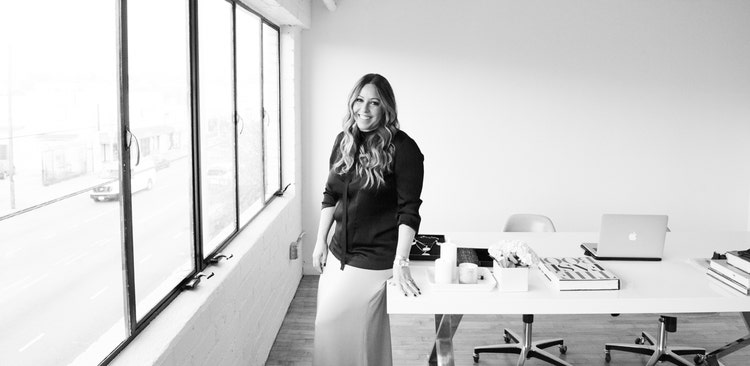
What if you could be as elegant and stylish as the stars who walk the red carpet, when you’re joining the next Zoom meeting? How can you transform your fashion choices into a daily process of empowerment?
This is Leesa Evan’s mission, stylist to celebrities, CEOs, athletes and more. Her real passion is using her voice to educate and uplift those who really need it most. Evans is a true purveyor of style—from her work as a costume designer for film to her dedication as a private stylist for celebrities and professional clients alike. Her personal philosophy and professional inspiration are drawn from a lifelong commitment to fashion, individuality and the art of storytelling. We caught up with Evans for an inside look at the world of a celebrity stylist and for some insider tips to everyday style that makes you feel good and is authentically you.
Lashaun Dale: People often remark that once they achieve transformation goals, they want to experiment with a new style that better expresses who they really are.
Leesa Evans: This is fun for me. It’s something I’m really passionate about and love to talk about. Clothing should make us feel stronger, more confident, happier. It’s really always been my philosophy that clothing can help create a sense of self that gets you so confident, you can go anywhere, anytime and do anything. It’s kind of our daily armor to not only protect us but also to show the world who we are.

LD: Tell us a bit more about your work.
LE: Sure—it breaks down in a few ways. I am a costume designer, a private stylist, a celebrity stylist and a fashion designer. I do a lot of things having to do with style. From a costume-design standpoint, I have mostly done a lot of contemporary comedies like “Bridesmaids,” “Trainwreck,” “Forgetting Sarah Marshall,” “Zoolander 2,” “Always Be My Maybe,” “I Love You Man” and more. I’ve been doing that for quite some time, and I really love it.
I am also a private stylist, and I work with all sorts of people—from entrepreneurs and studio executives to businessmen and women to stay-at-home moms and people who are retired, anyone who really wants to use clothing as a tool for confidence and well-being.
LD: Let’s repeat that: Use clothing as a tool for confidence and well-being. That is not the normal getting-dressed experience. Many people loathe getting dressed and shopping, even blaming it on their body and trying to use clothing to hide, which doesn’t lead to a very positive experience. Your philosophy of style is not about masking flaws but literally as an expression of who someone is.
LE: Yes, during the process of all my film work, I noticed that people were really affected by the way people dressed in films, not just the fashion trends that followed but the ideals or perceived characters embodied in the style. I understood immediately that you could evoke a certain kind of emotion by the way you dress someone. You could fall in love with someone immediately based on the way they were dressed and the ideal that you had for your girlfriend, boyfriend, best friend, the person you’d like to be, the person that inspires you, all those things. You also can dislike someone from the moment you meet them solely based on what they’re wearing. You assume they seem arrogant or they’re timid—all these adjectives of the person present and establish as they come on the screen simply by what the costume or clothes that they are wearing.
LD: I love that it is about intentionally raising the consciousness of something we do every day anyway and using it as a variable of how you can show up that day. That’s really a powerful perspective.
LE: Confidence really, I think, comes from knowing you’re a good person, and that good person is being portrayed to the world in a way that you feel good about. I started realizing that I could use clothing to feel the adjectives that I wanted to be associated with, whether that was sophisticated, elegant, calm, kind or intelligent. And it was working. Those are the things I had aspired to be. And my clothing was helping me get there. Clothing is so powerful even before you open your mouth. People are taking you in, even sometimes just very subconsciously, not purposely looking you over but just acknowledging who you are sort of from the get-go. If done in the right way, clothing can help support us in our everyday life to give us confidence and a sense of self that is sometimes only accomplished through many years of deep therapy. And even sometimes not then but just figuring out who we really are and what clothing tells our story. It’s something we have to do every single day, so it’s not even some sort of luxury. It’s as fundamental as eating. We have to get dressed every day. We have to get out of the house at some point. And how we do that can either make or break our daily experience—set a tone for our week, our month, our year and beyond.
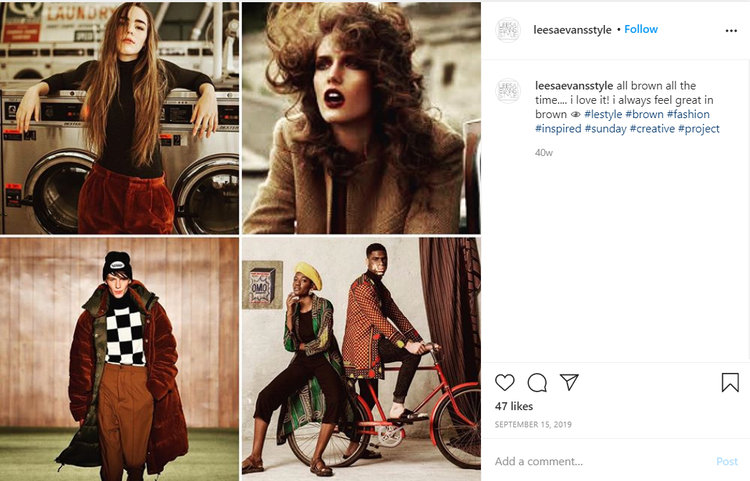
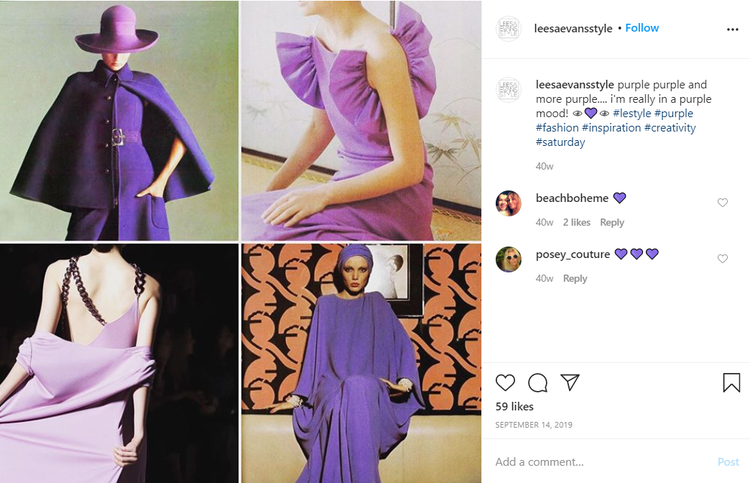
LD: How do you define style?
LE: Style is a very personal term because a lot of what creates style is the hope or the experience that you’re having. How you connect and interact with friends, family and co-workers, there’s a certain style that each of us has that’s truly individual, and so many of these things we’re being taught how to style. We learn what’s appropriate in speaking to friends, family and co-workers. What’s the vernacular and the style in which it would be appropriate to connect with people, we’re being taught that from a very young age. Yet we were never taught how to figure out our style of clothing. It’s as though we were all supposed to know already somehow, miraculously, how to dress ourselves.
It’s so fascinating. So parents who are currently now in their late 60s and older, they grew up with a really defined style because up until the mid-1960s, there was a much more formal way of dressing and much fewer options to what you could wear, men and women. So there wasn’t an expectation—we didn’t really need to teach people how to get dressed because there were so few options, and of those options, what would be appropriate depended on who you were, where you lived, where you worked and what your life experience was.
From the late ’60s and the whole freedom of expression came a multitude of options, and suddenly now we had to figure out how to dress in a way that really spoke to who we truly were as individuals. That’s where I think things started getting complicated because suddenly people were like, “Wow, so many options and what’s really right for me? And who am I really?” And then you start asking all these sorts of questions, and it’s a fascinating kind of experience because if you’re a creative person, you can articulate what you want to say by what you’re wearing, but not everybody is a “creative type.” Some people have more of a developed engineering mind or a mathematical mind. Not to say that those people aren’t also creative because, of course, they are, too. Everyone’s so unique in that way. But sometimes getting dressed is just not one of the secret weapons that someone has to have in their back pocket.
LD: I can relate. I’m one of those people who struggle with style. What advice do you have for me?
LE: Yeah, absolutely. I’ve broken it down to a matter of proportion. Proportion is the No. 1 factor in getting dressed for everyone. For example, we are all so unique. You can take two people, exactly the same height, exactly the same weight and, technically, exactly the same size. But those two people do not wear the same clothes. And why is that? Because one of them has, for example, long legs, and the other one has a longer torso. One is curvy, and the other one is straight. There are so many different factors to proportion, and there is also preference. One might say, “Oh, well, what I love is skinny pants.” And the other person [might say], “Well, actually, what I love is the wide-leg pants.” Technically, they’re both wearing the same size, and they’re the same height and the same weight. And it all seems the same, but it’s not at all. When we can figure out that sort of golden ratio of our own proportions, that’s when getting dressed becomes easy because we’re like, “Oh, that feels right.”
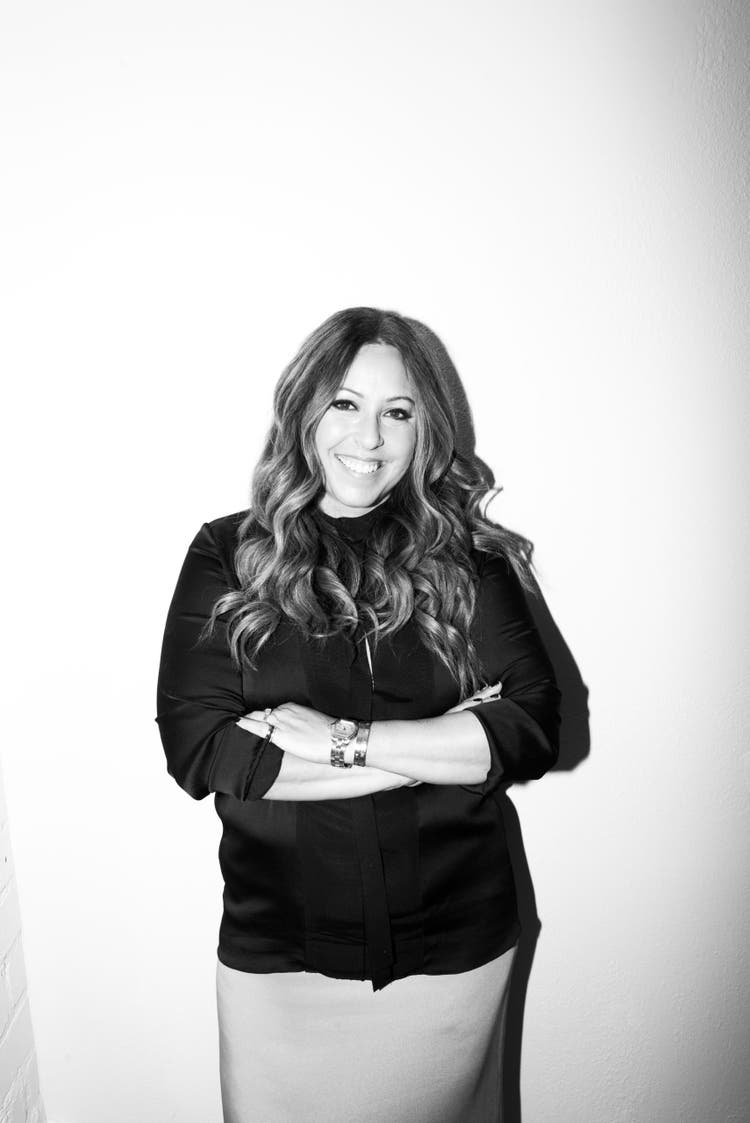
LD: Is it more than just a body type?
LE: To me, the whole idea of all these different body types is not relevant; it doesn’t help us in any way. The only thing that helps us is to try to create elongation in the vertical line that runs between the top of our head and the tips of our toes. When we create elongation in that vertical line, then we feel good—we feel comfortable, it feels right for us. And depending on the width or the length of the items of clothing that you’re wearing, you are either helping your vertical line elongation or you’re helping your horizontal line becoming a bit wider. And that’s where things can get thrown off.
I always begin with the question: What was it that you wore that you really felt great in? Your personal style is so dictated by this feeling that you have. We will start to build your clothes on the feeling. You know the feeling you want. Everything you wear should capture that essence.
LD: Where to start?
LE: Here are my steps
- Go into your closet and get really brutal. Clear out the chaos, and move on to the clothes that just aren’t right for you for whatever reason. They don’t capture the essence, and you can move them on to somebody who they would be literally perfect for. Clear it all out. Keep the 100 percent “yes” pieces. Everything else is just no. You don’t keep them for the rainy day, just clear it out.
- Be patient as you start to get your clothes working for you each day.
- As you look in the mirror, consider proportion, asking [yourself], “Do I look longer than I look wide? Is the vertical line longer than the horizontal?”
- Block 20 or 30 minutes once a week to try on some clothes. Do the work on the front end until you have a good sense of what it is that you need proportionally for your silhouette and how to create your daily uniform.
- As you shop for new pieces, build your wardrobe on that desired feeling, that essence of, “I feel great when I wear this.” It might take time to find those pieces. You are very specifically looking for the silhouette that is in the proportion that works for you as an individual. Your choices become much more limited, and it’s actually extremely helpful.
LD: What should I expect on the other side of this process?
LE: Confidence. The thing about this process of getting your daily uniform down, something is fascinating that happens with it. As a result of feeling so good daily, you just become braver and you start to feel like, “I can play with fashion. This is really fun.” I don’t have to be perfectly dressed all the time. I can be imperfectly dressed, but I’m feeling fun and whimsical about it. I think what happens is it gives you this permission to walk around in sweatpants and/or an evening gown and everything in between. And because you know the feeling that you’re trying to capture, you start embodying and living in that feeling almost every day of your life. And it’s a truly transformative experience.
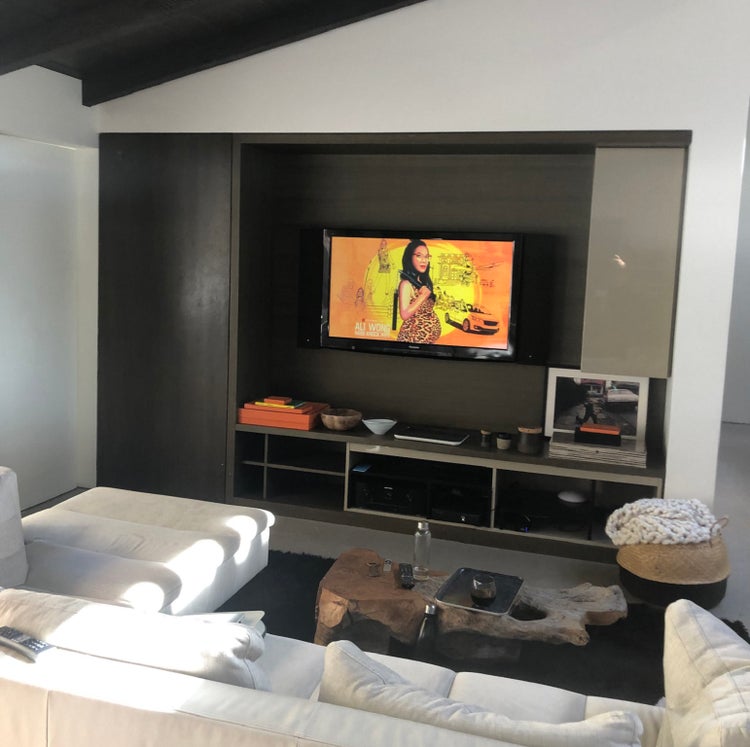
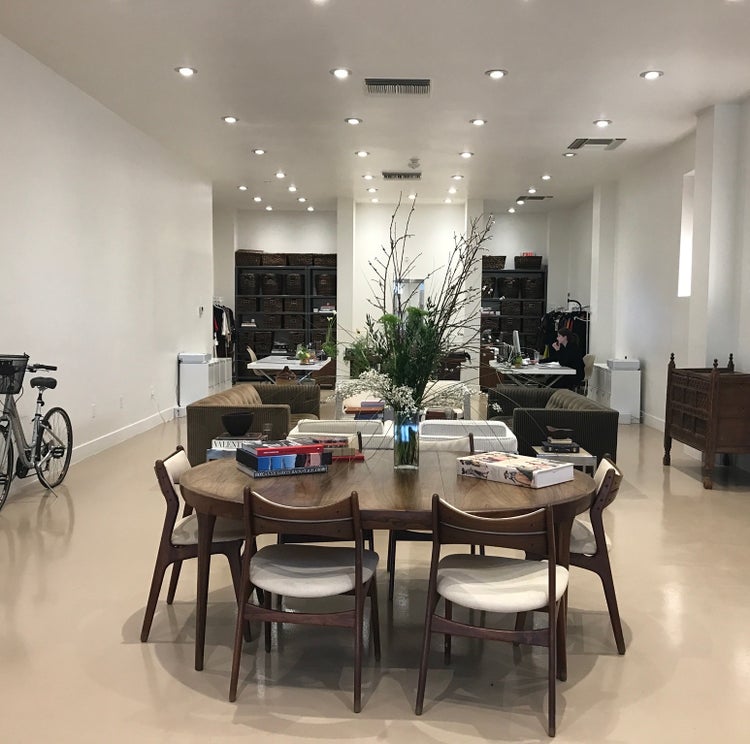
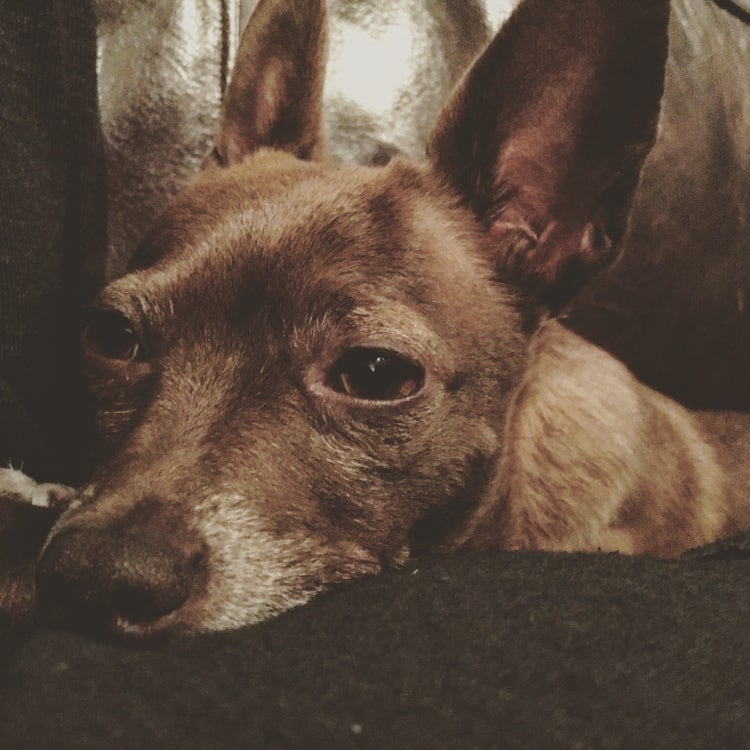
LD: What do you do about your own personal-health wellness? How do you take care of yourself day to day?
LE: No. 1, I meditate. Meditation has been a huge game changer for me in terms of being able to deal with the level of multitasking that I need to do daily. It helps me feel calm and clear thinking, so meditation. Also, I do some form of daily exercise, even if it’s a 15-minute stretching routine, a 30-minute walk, dancing around for five minutes around your living room, whatever it is, just some kind of movement to get the day going. I surround myself with a lot of loving people who, at any given moment, are there to be a shoulder to lean on or a friend to chat with or my husband. We jokingly say we talk to each other 50 times a day. Just having that connection of someone you know who truly has had your back, that is so good for well-being. Being around like-minded people is so important. The staff I have that works with me are such a good group of humans, and I admire and respect each of them individually. I feel lucky, also, to work with them. And when that doesn’t always happen—I mean, I run across difficult and intense and potentially unhappy people regularly—I try to remember that no one who is truly happy is ever unkind. So it just gives me a lot of compassion to hear people out and understand that the human condition can be really intense for people sometimes and just try to offer whatever I can in that moment of, “This, too, will change and pass the minute we change our perspective. Our minds are all-powerful.” These are the things that I really think about on a daily basis of how to keep myself feeling healthy and happy and able to take on just the regular pressures of everyday life.
LD: Beyond styling others and your film work, you are working to teach this as a philosophy and launched StyleFund.
LE: StyleFund is an initiative aimed at the cultivation of confidence and overall well-being through fashion. We launched in 2016 with actress Amy Schumer with the mission to improve women’s process of getting dressed by helping them better understand their individual silhouettes. I knew that, potentially, this intimidating factor of fashion and getting dressed was a negative connotation that could be transformed into this really amazing process that you can use to get dressed. I wanted to share it with as many people as I could, so I launched StyleFund as a way to teach people this really fundamental way to get dressed every day and create a lot more confidence and a sense of well-being. Our goal is to simplify the process of getting dressed by helping women better understand their silhouette—creating true confidence. We’ve had many events now, and we’ve reached out to so many different kinds of communities—from women coming out of the military to women going back to work to men and women in the transgender community to girls and boys aging out of the foster-care system and looking to succeed in their life from that point, really just anyone who really could use clothing as their secret weapon to keep in their back pocket at all times.

What’s cool about StyleFund is we can all be our own best stylists for ourselves because it’s so individual. I’m just teaching you the technique, and then you’re going to run with it. We believe that feeling great about what you wear every day manifests limitless possibility. There is this incredible, unifying factor that I have learned over the years, and it is something that makes me deliriously happy. It doesn’t matter how much money you have. It doesn’t matter how old you are, what size you are, your race, your gender. None of that matters. We all, universally, feel intimidated by fashion and getting dressed every day. It’s surprising and amazing. There’s such a struggle with self-worth. It comes in so many different forms. And if this is one tool that can help us all feel worthy of being wherever we are and worthy of striving for more, one of the most incredible [things] is that when you feel good about what you’re wearing, you are happier and then you feel kinder. And as a result of being kinder, you connect with more people daily. And I’m just entirely sure that that can actually change the world.
LD: And you launched a clothing line?
LE: I am a co-founder of LeCloud, also co-founded with Amy Schumer. It is sold at Saks, and the philosophy is that every piece of clothing in the collection should feel like a cloud—which it does.
LD: Do you have any predictions for the new decade that we should expect in fashion and style?
LE: Individuality is much more accepted now. I think that going forward, we will find a combination of individuality in connection to more simplicity. Those two things are going to free up all this inner dialogue and drama that we’ve unnecessarily created for ourselves every single day when we walk out of the house. Can you imagine what it would be like to walk out of the house just feeling like, “Hey, that was effortless to get dressed and I feel great and it was simple, and this really speaks of who I am and all those things that I stand for?” We’re moving toward an empowered expression of simplicity.
Photo credit: Jake Rosenberg